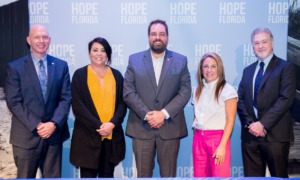The recent White House conference on Teenagers was, for a White House that has hosted memorable events over the past two centuries, a fairly routine – even insignificant – affair. But its attempt, only partially successful, to focus on positive youth development might just signal a long overdue shift in adult’s view of teenagers.
In 1910 President Theodore Roosevelt convened the first White House Conference on children. For understandable reasons, the living conditions, health care, education opportunities for children were deplorable. That gathering drew up a list of youth problems and recommendations that lead to the establishment of the Children’s Bureau. As the century progressed, the White House conference on children, held every decade, came to be dominated by well-meaning criminologist mental health experts and others adept at identifying what’s wrong with American teenagers.
One participant that the recent White House gathering, Dr. Karen Hein, now president of the W.T. Grant Foundation, has written, “Our good intentions have led us to frame issues of adolescent development as being special and unique. Others have taken the opposite approach and framed teenagers instead.” These results are everywhere. The federal budget is chock-a-block filled with billions to keep kids off drugs, avoid sex, AIDS, and pregnancy, and obey the law or else. Our only national mandated entitlements for teens: time behind bars for infractions ranging from horrendous to harmless.
This is no recent phenomenon. Rather, it is the cumulative weight of youth policies that catalogue and prescribe the negative. Part of the cause for this sad state of national affairs is the lack of a national youth policy squarely centered on the positive. Given the deep cultural and political schisms that now permeate so much of social policy debates, that task may be impossible.
Yet, nations in western Europe and the developing world have found the crafting of a positive youth policy rewarding. Returning from a recent stay in South Africa, Pennsylvania State University researches and Hip-Hop expert Sean Joe says, “Seeing the national youth policy piece just blew me away.”
A more feasible approach to shifting national attention toward support for young people may be in at least having a place in the federal budget where Congress can appropriate funds for youth work stripped of its usual negativity.
In 1994, some in Congress tried to enact legislation, the Youth Development Block Grant, to do just that. But the toped $400 million in spending came at the expense of existing, largely infective anti-drug abuse programs. That led to Democratic opposition that killed the bill.
Now another attempt to reorient federal youth policy is in the works. A broad coalition of national groups, ranging from the 34-member National Collaboration for Youth, the United Way of America and others are working closely to draft a Younger Americans Act that would provide $2 billion in new spending for locally determined youth development activities. Even the AWOL when it counts America’s Promise-The Alliance of Youth is found on board. It’s led by youth works’ new pal, retired Gen Colin Powell.






























